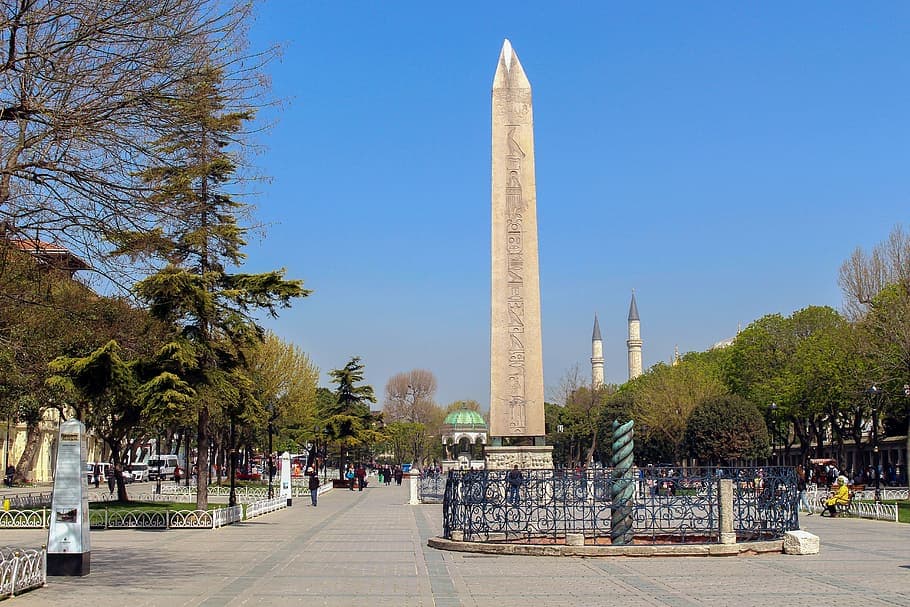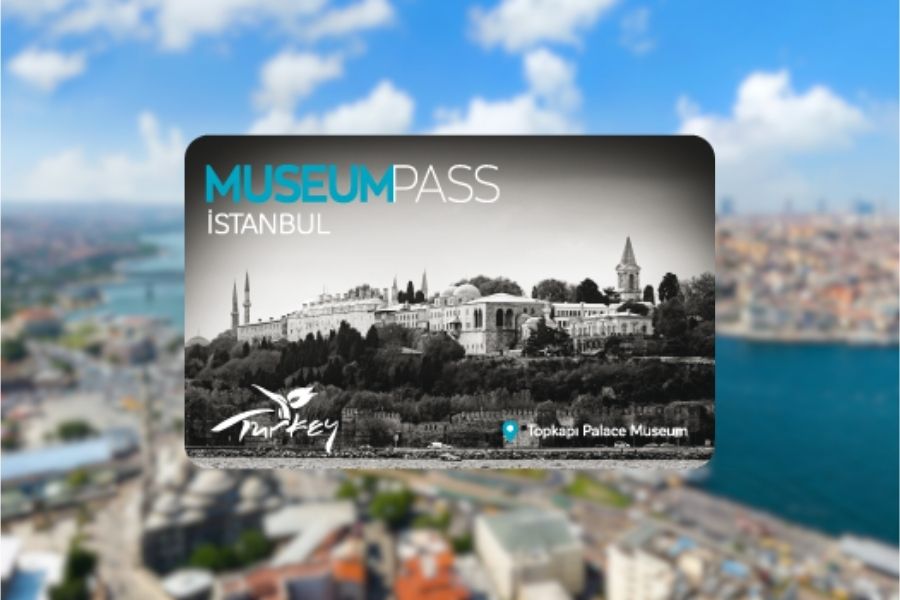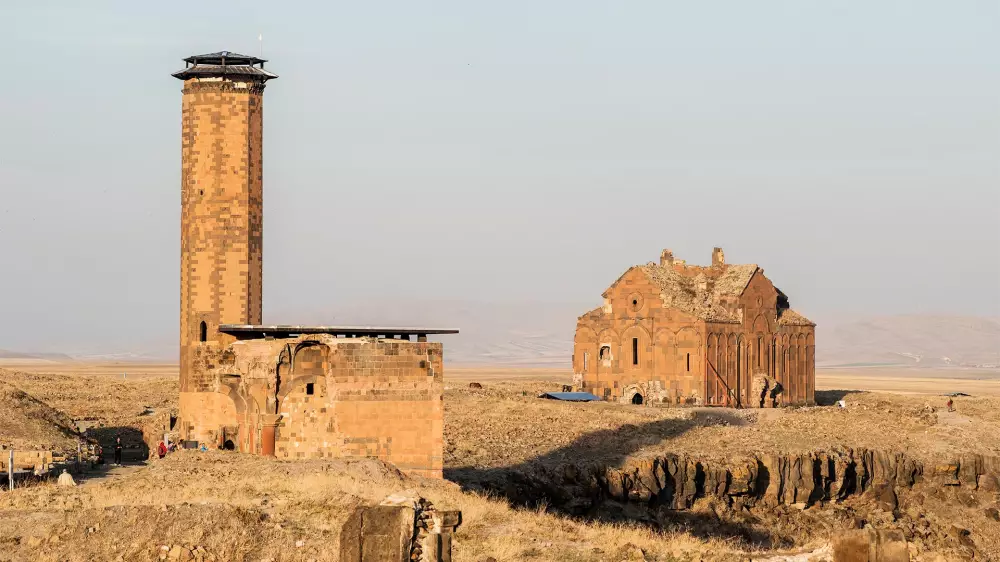
Obelisks Shedding Light on Istanbul's History
Table Of Contents
Istanbul, which has been the apple of the eye of many civilizations throughout history, is today a historical capital with countless works from different periods. In this rich history that it has carried to the present day with its eye-catching mosques, churches, and palaces, it continues to keep the obelisks standing like a secret. Some of the obelisks in Istanbul are side by side, while others are in completely different neighborhoods. Let's get to know the obelisks that we often pass by but do not pay much attention to in terms of their history.
Theodosius Obelisk
Theodosius, an ancient Egyptian obelisk; is located in Sultanahmet Square, which was called the Hippodrome during the Byzantine period and the At Meydanı during the Ottoman period. Theodosius Obelisk, which is side by side with the Serpent Column, is also called the Obelisk. Since it is located at the point where Istanbul hosts the most tourists, it continues to be one of the first stops of thousands of tourists every year. The Obelisk Obelisk has managed to survive to the present day taller and more solidly than other obelisks in the area. There are Ancient Egyptian texts on four separate sides of the obelisk. It was brought from Egypt by Roman Emperor Theodosius I in 390 AD and erected in its current location.
Serpent Column
Also known as the Burmese Column… The Serpent Column, which continues its existence in the historical Hippodrome, is one of the most important textures of Istanbul. It is no longer possible to see the snake heads on the column, which features the depiction of three intertwined snakes. Two of the snake heads are missing, and one awaits visitors at the Istanbul Archaeological Museum. The column is made of bronze and is an Ancient Greek monument. The monument is now surrounded by iron and protected. It is thought to have been brought by Emperor Constantine in 324 and erected in its current location again. There are also rumors that the Serpent Column was believed to be a talisman that protected the city from insects and reptiles.
Knitted Column
There is no definite information about its historical construction, the Knitted Column is an important monument that has been and continues to be a part of Istanbul's history. The column, located in the south of Sultanahmet Square, is 32 meters long. The most important definite information about it is that it was repaired by VII. Constantine in the 10th century. For this reason, it is also known as Constantine.
Million Stone
The Million Stone, which has managed to survive from the Eastern Roman period to the present day, is one of the most special obelisks of Istanbul. Located close to the entrance of the Basilica Cistern, the Milion Stone was considered the starting point of all Ancient Roman roads reaching Constantinople. In addition, the distances of other cities in the world to Constantinople were measured with this stone. It is also called the zero stone due to these two main elements. Although it does not attract much attention due to its location today, it is one of the special structures that shed light on the history of Istanbul.
Kıztaşı (Marcianos Column)
Despite its deep-rooted history dating back to 455, Kıztaşı, which has managed to survive, accompanies Fatih's rich past today. It is located in Kıztaşı Neighborhood, the first Turkish neighborhood after the conquest of Istanbul. There is also a small legend about the stone. According to Roman legend, a genie appeared before a charmed girl carrying this stone when Hagia Sophia was being built. The genie said that Hagia Sophia was already finished and the girl left the stone there and went to look at Hagia Sophia. Then, when she saw that it was not finished, she realized that the genie had deceived her and went back to the stone, but the girl no longer had magical powers. If you happen to pass by, you can visit Kıztaşı, which accompanies such an interesting story, privately.
Çemberlitaş
Çemberlitaş, which gave its name to the district where it is located, is one of the best examples of obelisks in Istanbul. The history of the stone, erected in the name of Byzantine Emperor Constantine I, dates back to 330. It is known that it was brought from the Temple of Apollo in Rome by Emperor Constantine I. In the years it was first erected, there was a statue of Apollo on the column, but Constantine replaced it with his own statue. You can take the time to examine Çemberlitaş more closely, which is where thousands of people pass by today due to its location.
Written by: Habibe Tokgöz



